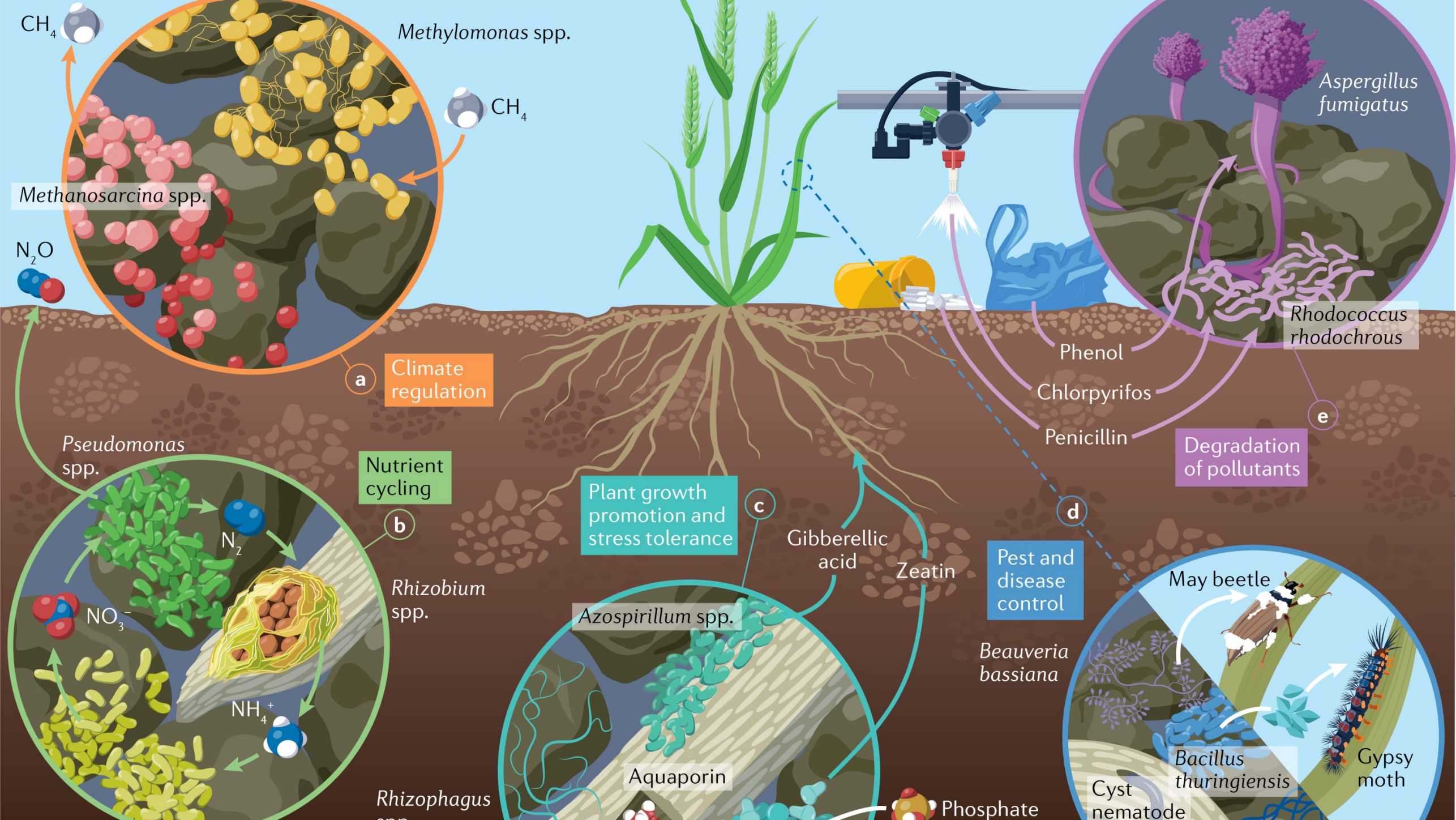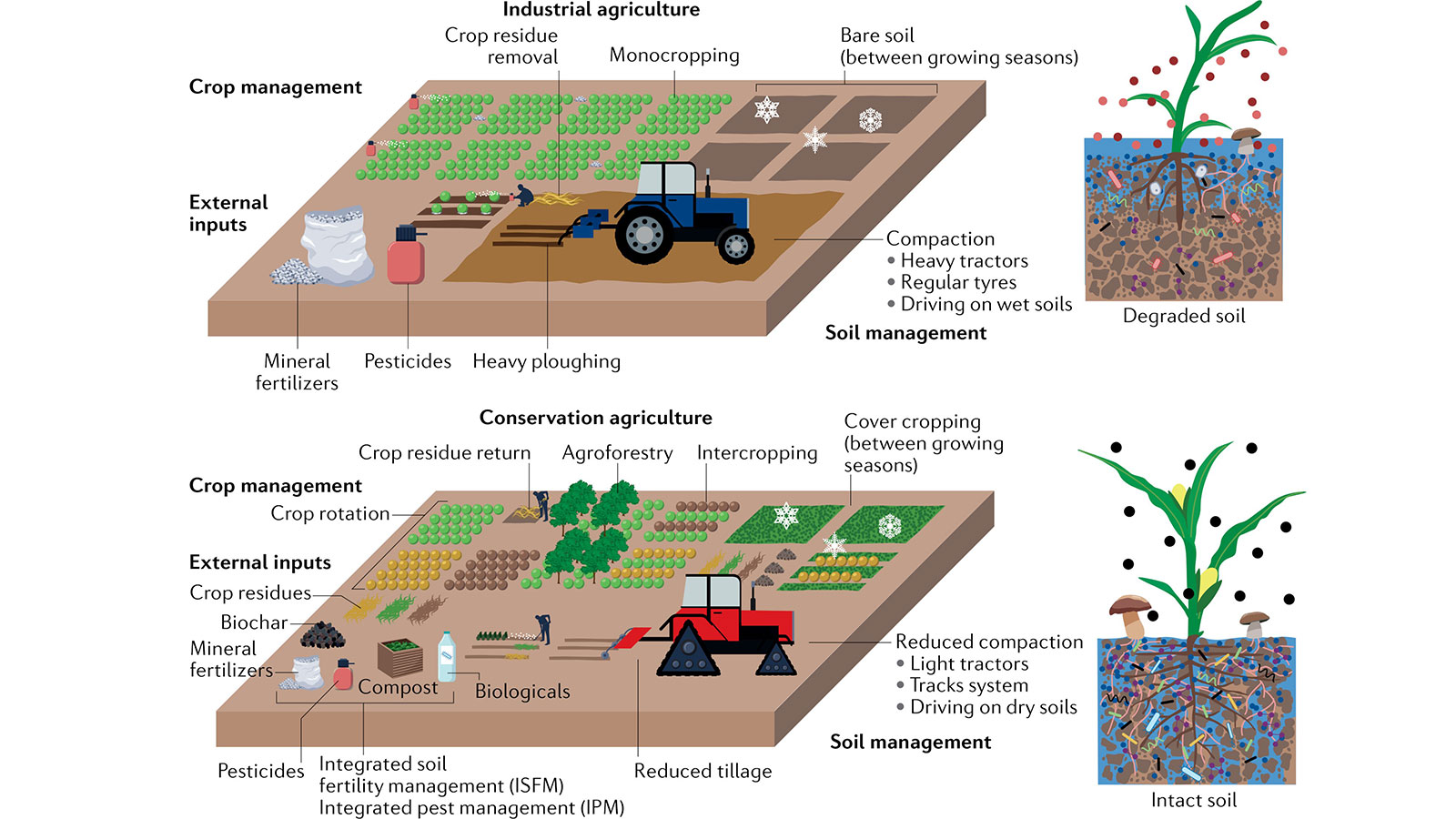Soil microbiomes – a nature-based solution for sustainable agriculture
Soils are complex systems that harbor diverse, microscopic lifeforms called the microbiome. Interdependent constituents of the soil microbiome regulate key functions in agroecosystems that determine soil fertility, crop productivity and stress tolerance. A new review article describes the complex interactions between soil microbiome, soil structure and sustainable agriculture.
A cornerstone of sustainable agriculture is proper stewardship of soil. Soil provides fundamental ecosystem functions including decomposition and transformation of organic materials and toxic compounds, nutrient and water provisioning for plants, control of pests and diseases, and greenhouse gas mitigation. Many of these functions are mediated by soil microorganisms.

Microbial processes are intricately linked to soil structure, such as aggregation and pore connectivity, because soil structure regulates the flow of water, oxygen and nutrients through the system.
Soil disturbance associated with increasingly mechanized and intensified agriculture can induce severe structural alterations to the soil. These alterations can change microbial processes occurring at the microscale and ultimately reduce soil functions essential for land productivity and ecosystem health. Sustainable management approaches such as integrated soil fertility management (ISFM) and integrated pest management (IPM) seek to improve soil structure and enhance soil biodiversity by making tailored decisions related to soil tillage, crop management and external inputs.

A recent article in Nature Reviews Earth & Environment - authored by Martin Hartmann and Johan Six leading the Sustainable Agroecosystems Group - describes the link between the soil microbiome, soil structure and agricultural management practices, and discusses how this link must be protected, promoted and restored to build climate-smart, resource-efficient and stress-resilient crop production systems that harness microbial functions as a nature-based solution for sustainable agriculture.
Reference
Hartmann M, Six J. Soil structure and microbiome functions in agroecosystems. Nat Rev Earth Environ (2022). doi: external page 10.1038/s43017-022-00366-w